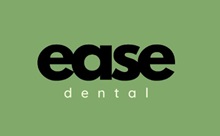Orthodontics and Dentofacial Orthopedics are specialized fields within dentistry that focus on the diagnosis, prevention, and correction of malpositioned teeth and jaws. Here’s a breakdown of each:
Orthodontics
Orthodontics is primarily concerned with correcting irregularities of the teeth and jaws, often involving:
- Alignment of Teeth: Correcting crowded, crooked, or spaced teeth.
- Bite Correction: Addressing overbites, underbites, crossbites, and open bites.
- Tooth Movement: Using braces, clear aligners (e.g., Invisalign), or other appliances to move teeth into the desired position.
- Aesthetic and Functional Improvement: Enhancing the appearance and function of the teeth and smile.
Dentofacial Orthopedics
Dentofacial orthopedics focuses on the guidance of facial growth and development, which occurs primarily in childhood. It involves:
- Jaw Growth Management: Correcting imbalances in the growth of the jaw and facial bones.
- Use of Appliances: Devices such as expanders, headgear, or functional appliances are used to guide jaw growth in a favorable direction.
- Treatment Timing: Often starts in younger patients to take advantage of growth spurts, typically during the pre-teen years.
Combined Treatment
- In many cases, patients will require both orthodontic and dentofacial orthopedic treatment.
- Phased Treatment: Dentofacial orthopedic treatment may precede orthodontics or occur simultaneously. For example, a patient might wear a jaw-correcting appliance before getting braces.
Key Differences
- Orthodontics: Focuses on the teeth.
- Dentofacial Orthopedics: Focuses on the jaw and facial bone structure.
Who Provides This Treatment?
- Both specialties are typically handled by an orthodontist who has undergone additional training beyond general dentistry.
Common Conditions Treated
- Crowded or crooked teeth
- Jaw misalignment (e.g., Class II or Class III malocclusion)
- Overbite, underbite, crossbite
- TMJ (Temporomandibular Joint) issues related to jaw positioning
Goals of Treatment
- To create a healthy bite that improves oral function and aesthetics.
- To guide proper growth and development of facial structures.
- To reduce the risk of tooth decay, gum disease, and other oral health issues associated with misaligned teeth and jaws.
